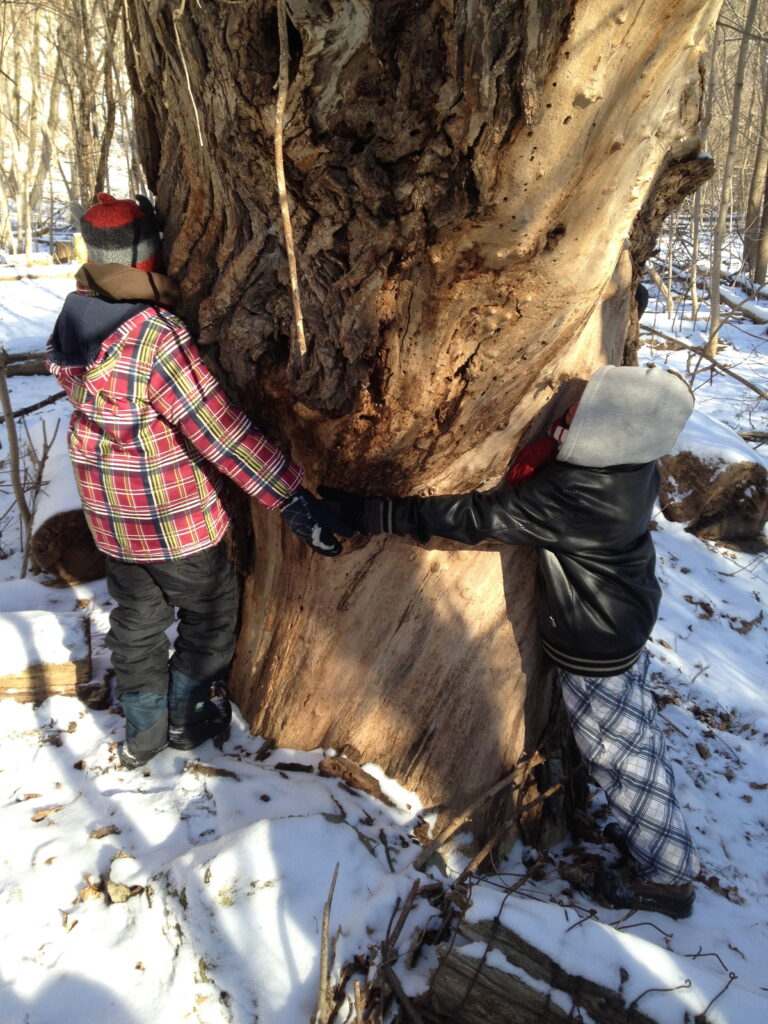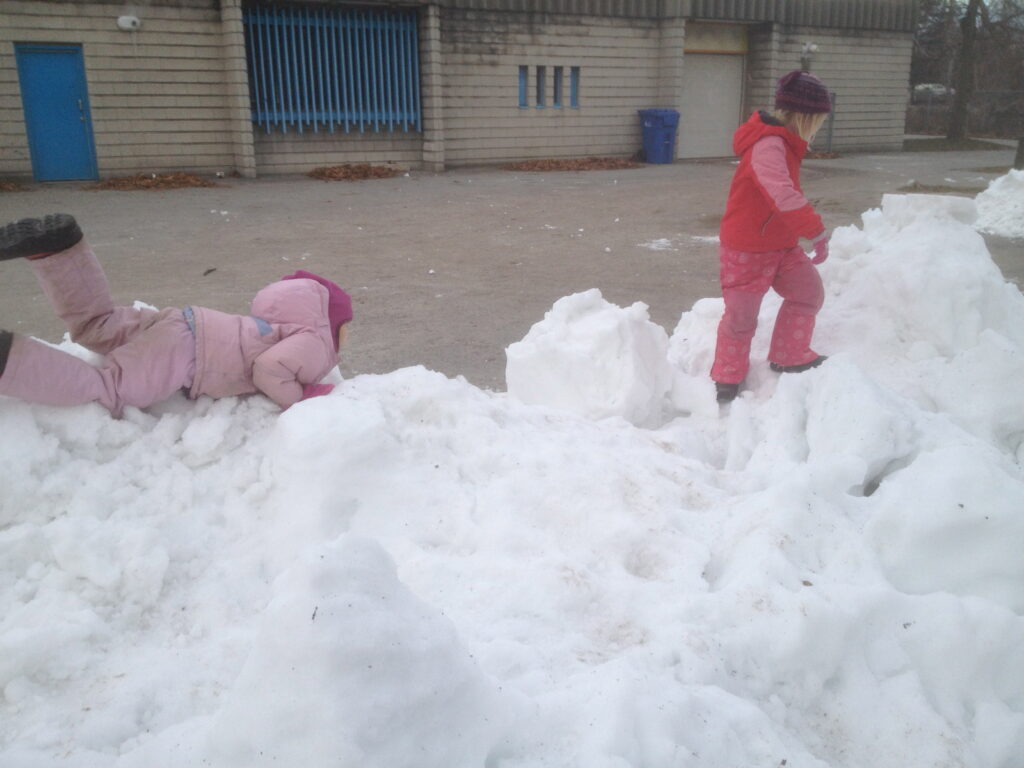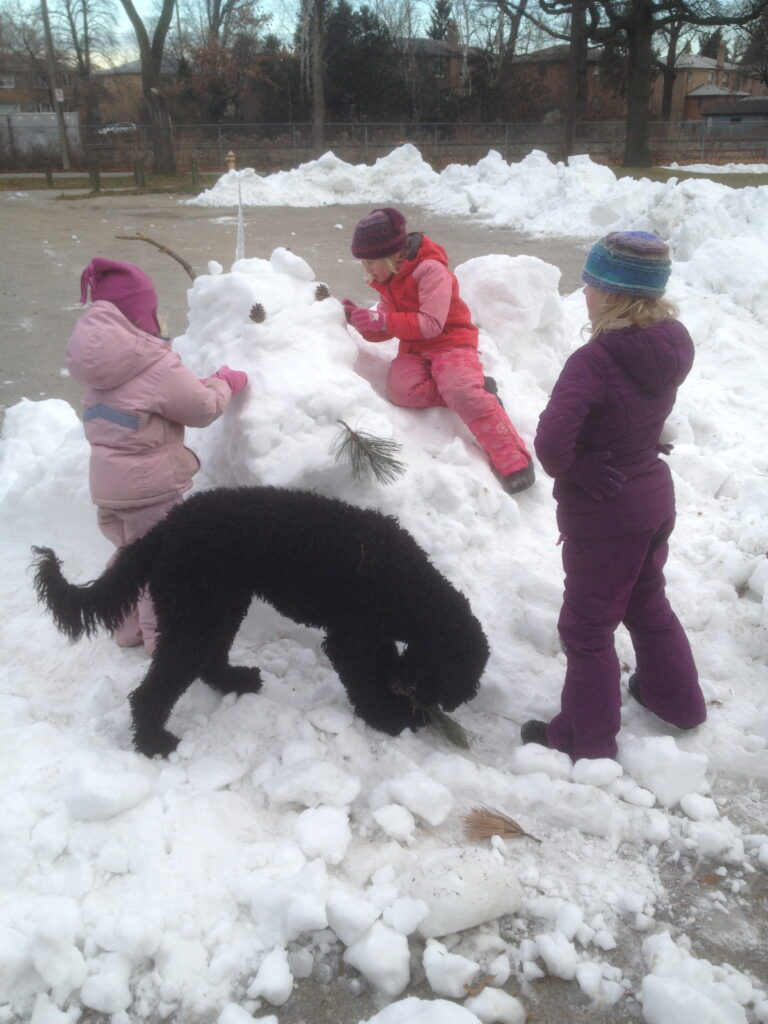
Nanaboozhoo (Greetings in the name of Ojibwe First Teacher)! Hopi miinawaa (again). From the beginning place of considering Land as Teacher, or more precisely, A’kinoo’amaaged (Earth Teaching), we begin to appreciate the vastness of the Four Directions, the Four Sacred Medicines, the Four Races of Human Beings, and the Four Seasons. These Four Teachings (and many more) are contained within Ojibwe Sacred Circle which requires lifetimes of study. While there are people who continue to be raised with these Traditional Teachings from infancy, most families continue to be severely impacted by eurocentric education which made this Indigenous, land-based education illegal for 150 years in Canada.
Even six years after Canada committed to Truth and Reconciliation with Indigenous peoples, only 8 out of 94 Calls to Action (2015) are completed in 2020. None of these are in education. Rather than wait on governments to respond appropriately, this ‘Seasonal Pedagogy’ represents a grassroots response to support “culturally appropriate early childhood education” (TRC, 2015) from a place of Ojibwe Traditional Knowledge.
During the Spring of 2019, as a result of York Region Nature Collaborative’s Land as Our First Teacher Conference, a group of Elders, Knowledge Keepers, Indigenous and non-Indigenous educators began renewing old-time protocols and Ceremonies of meeting at the ‘edge of the bush’ around Sacred Fires being lit on the Humber River in Toronto. During these Ceremonies, we were gifted with what my Auntie calls a ‘Memory Teaching Bundle’. I was given the task of being its Caretaker.

A ‘Sacred Bundle‘ is a Traditional way of assembling Indigenous Knowledge. This ‘Memory Teaching Bundle’ connects with specific stories, songs, and medicines in relationship to Ojibwe Sacred Circle. Because these relationships are maintained in Ceremony through the Oral Tradition, they cannot be shared in this context. However, to help with this process of Truth and Reconciliation in early childhood education, I created a ‘Drawing of the Memory Teaching Bundle’ that orients the ‘Seasonal Pedagogy‘ in relationship to the ‘edge’ this Bundle.

While the teachings of Ojibwe Sacred Circle are vast, this ‘Drawing’ points to four discreet moments in the Anishinaabe Seasonal Calendar: Summer Solstice (Green), Fall Equinox (Red), Winter Solstice (Blue), and Spring Equinox (Black). Without getting into specific details of these important Ojibwe Ceremonies, my intention here is to share a basic teaching of the relationship those four concepts of Birth, Movement, Relationships, and Passing have to those specific times of year and to deeper considerations of child development and play.

For Ojibwe, the New Year begins when Mother Earth gives us her first fruit: Ode’miin (Heartberry/Strawberry). This new beginning or ‘Birth‘ happens just after the Strawberry Moon during Summer Solstice. In honour of Mother Earth, I was taught to colour this time Green.

At Fall Equinox just after Ricing or Corn Moon, Mother Earth gives back all of her bounty through harvest time. I was taught to colour this time of ‘Movement‘ Red like the lifeblood of the People.

At that Dreaming time when we have the longest night and Mother Earth begins to tilt back towards Grandfather Sun, we celebrate ‘Relationships‘ with Spirit and Father Sky. I was taught to colour this time Blue.

After a long Winter’s sleep, Mother Earth returns to life when the Maple Sap begins flowing under Maple Moon around Spring Equinox. The seeds that have been buried beneath the snow begin ‘Passing‘ new life to the next Seasonal Circle. I was taught to colour this time Black like Gizhwe Manidoo (Great Kind Mystery).
The interesting thing about this description of the natural, life-giving process we experience every Four Seasons, is that those four concepts of Birth, Movement, Relationships, and Passing also describe the life cycle of every living thing on the planet: from the smallest insect to the oldest trees. In terms of human development, we experience this process over the course of our entire lifetime, but also when we play. The careful observation of infants and young children during unstructured, free play reveals this same Circle, particularly when they are touching Mother Earth.

Birth 
Movement 
Relationships 
Passing
For years, my wife Sara and I would take our kids out to play along the Humber River in all kinds of weather. At first we would take lots of photos, but as we learned this Circle Teaching, we discovered we only needed to take four photos of those key moments when the play changed to share the whole story with each other.
While this ‘Seasonal Pedagogy’ comes from Ojibwe Knowledge of the Four Seasons around the Great Lakes, it connects with the life experiences of all living things. Everything that grows has Birth, Movement, Relationship, and Passing. Because of these relationships, this ‘Seasonal Pedagogy‘ sits at the ‘edge of the bush’ between nations and worldviews. It suggests a shared language to describe the natural processes we experience as human beings, particularly when we are supporting young children’s land-based play. Because this pedagogy can relate to all nations, collective work to develop our own respectful understandings of its relationships to Indigenous peoples, Mother Earth, and the land-based play of our children can lead us to deeper knowledge of “establishing and maintaining respectful relationships”… the essence of Truth and Reconciliation (TRC, 2015, p. 6).
For more information on our ‘Land as Teacher Community of Practice’ that we are developing through Storypark please contact [email protected]


